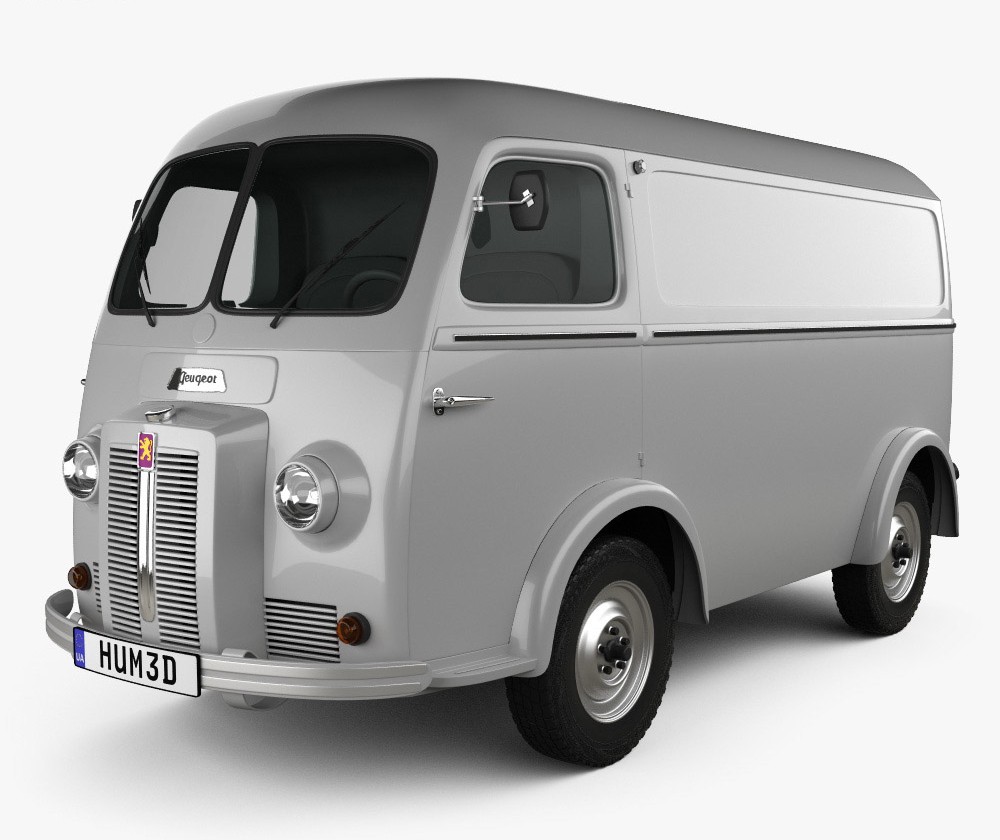

The Peugeot D3 is a classic forward-control panel van with front-wheel drive, produced by Peugeot from 1950 to 1955, and is a rebadged version of a Chenard-Walcker design. It is known for its "pig nose" appearance and utilitarian function.
Overview and History
Originally produced by Chenard-Walcker from 1946, the van was adopted by Peugeot when they acquired the business around 1950. The D3 was built with a self-supporting bodywork, a low and flat load floor made possible by its front-wheel drive layout, and independent suspension. The prominent, extended front end, necessary to accommodate the Peugeot passenger car engines, earned it the lasting nickname "nez de cochon" ("pig nose"). The D3 and its successor the D4 were popular work vehicles in France, used by police forces, the post office, and other businesses, with approximately 76,000 units produced in total across both models.
Uses and Noted Features
Versatile Applications: The D3's practical design made it highly adaptable for various professional uses, with common variations including police transport, postal delivery minibuses, ambulances, and even specialized horse-boxes converted by firms like Théault.
Engine Upgrades: The D3 evolved in its early years; the initial D3A used the 1.3-liter engine from the Peugeot 203, producing 32 horsepower, while the later D3B model featured a more powerful 40 horsepower version of the engine.
Practicality: The van's front-wheel drive system was considered advanced for the era, allowing for excellent load accessibility with a low, flat floor area.
Legacy: The D3 was a pioneering front-wheel drive van that paved the way for later successful Peugeot commercial vehicles like the D4 and the more modern J7, which eventually replaced it in 1965.